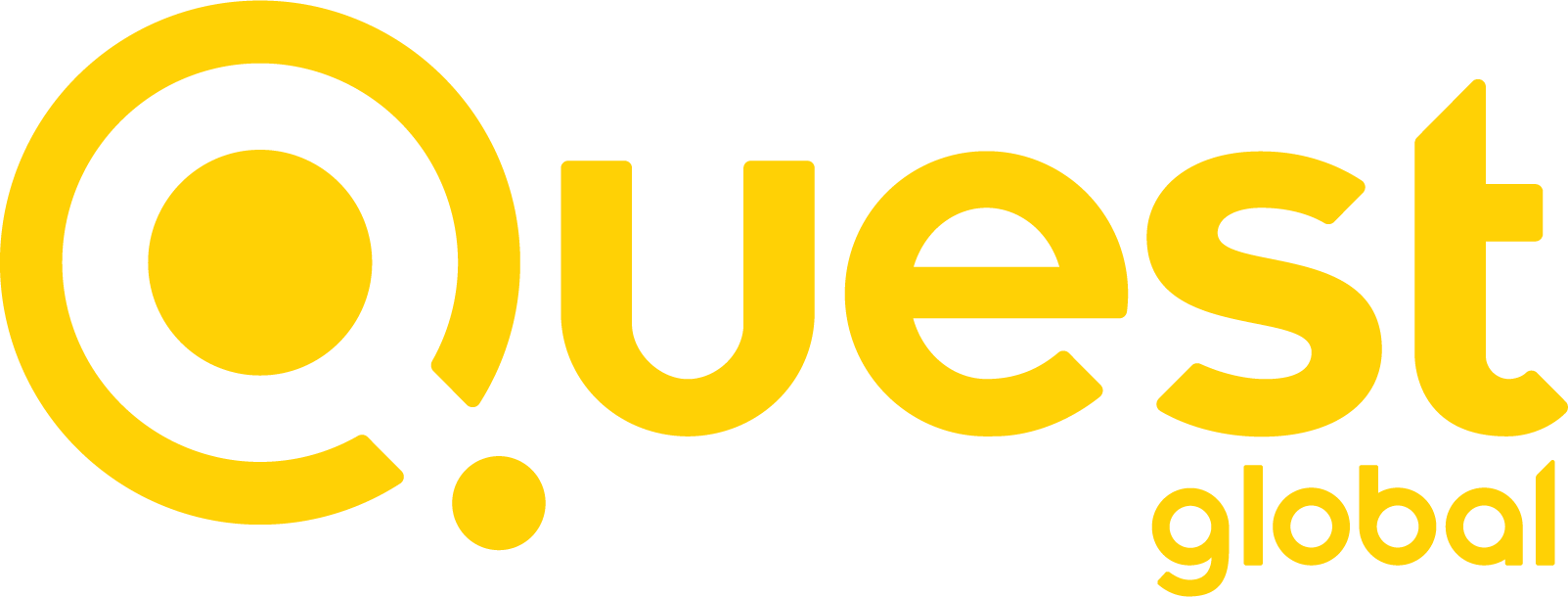Executive summary

The European Union Medical Device Regulation has fundamentally altered the competitive landscape for medical technology companies. Four years after its full implementation in May 2021, we have moved beyond the initial compliance scramble to witness a more nuanced reality: organizations that approached MDR as a strategic transformation opportunity are now demonstrating measurable competitive advantages over those who treated it merely as a regulatory checkbox.
The statistics paint a stark picture of an industry in transition. Transition periods extend to December 31, 2028, for non-implantable class IIb and lower-risk devices, yet many organizations remain unprepared for the cascading business implications. What began as regulatory compliance has evolved into a fundamental question of business model sustainability. Companies that recognize this shift are positioning themselves to capture market share from those still struggling with basic adherence.
With over 500,000 device types on the EU market, the MDR overhaul is unprecedented in scale and impact.
The transformation extends far beyond documentation upgrades. Quest Global’s analysis shows that companies need three key strategies to navigate this shift: turning compliance into a strategic differentiator, integrating evidence-based development processes, and leveraging data and AI for customer-centric innovation.
30% of legacy devices risk market exit due to insufficient clinical data, while OEMs grapple with 40% longer time-to-market cycles under tightened documentation requirements.
Current implementation landscape
The MDR implementation journey has revealed significant variations in organizational readiness and strategic approach. Recent surveys indicate that companies are facing enormous challenges two years after full implementation, with many discovering that compliance represents only the entry point to a broader transformation requirement.
The regulatory framework has created distinct winners and losers. Organizations with robust quality management infrastructures adapted more quickly, while others experienced extended market access delays. This divergence has created consolidation opportunities, as stronger players acquire struggling competitors or their product portfolios. We are observing strategic acquisitions where regulatory capability becomes as valuable as intellectual property or market position.
More significantly, the MDR has accelerated the digital transformation of medical device development and manufacturing. Companies initially resistant to digitizing their quality processes found themselves forced to implement data management systems to handle the documentation requirements. These same systems now serve as platforms for business intelligence and operational optimization.
The regulatory environment has also driven unprecedented collaboration between traditional competitors. Shared service models for clinical data collection, joint ventures for regulatory pathway development, and collaborative approaches to supply chain management have emerged as companies seek to distribute the cost and complexity of compliance.
An early MDR implementation survey found that 85% of legacy products had not yet been re-certified under MDR. In plain terms, thousands of products and suppliers had to be reassessed to stay on the EU market. Many manufacturers responded by narrowing their portfolios: a MedTech Europe poll revealed that over half of companies planned to drop roughly one-third of their devices rather than recertify them.
Post-Market Surveillance (PMS) as strategic intelligence
MDR’s post-market surveillance requirements have created unexpected opportunities for organizations willing to rethink real-world evidence collection. Traditional manufacturers treated post-market activities as minimal compliance obligations. Strategic organizations recognized these requirements as pathways to product intelligence and customer insights. A cardiac monitoring device manufacturer transformed its approach by implementing surveillance across its product portfolio. Instead of viewing data collection as regulatory burden, the company developed analytics capabilities providing real-time insights into device performance, patient outcomes, and clinical workflow integration. This intelligence drove immediate product improvements and informed next-generation development priorities.
The key insight involves recognizing that MDR-mandated data collection creates unprecedented visibility into product performance across diverse clinical environments. Organizations can identify performance variations, usage patterns, and outcome correlations that were previously invisible. When properly analyzed and applied, this information becomes competitive intelligence.
Business implications extend beyond product development. Post-market surveillance data enables precise market segmentation, targeted clinical support programs, and evidence-based value propositions. Organizations leveraging this data report improved customer retention, faster adoption of new features, and stronger clinical partnerships. Advanced organizations use post-market surveillance as a foundation for predictive analytics. Pattern identification in device performance and patient outcomes enables companies to anticipate clinical needs, prevent adverse events, and develop proactive support protocols. This represents a fundamental shift from reactive compliance to predictive healthcare management.
The global “smart medical devices” market is projected to nearly double from $33.7 billion in 2023 to $67.4 billion by 2030, driven by remote monitoring and AI-enabled analytics. Leading companies will ride this wave by embedding regulatory-required PMS processes into their digital strategy: e.g. using predictive analytics to schedule preventive maintenance or update software for at-risk devices before users even notice issues.
Post-Market Clinical Follow-up (PMCF) integration:
Under MDR, PMCF transforms from a selective application for high-risk devices to a mandatory continuous process for all medical devices, creating both operational challenges and strategic opportunities for manufacturers. PMCF activities involve systematically and continuously collecting and analyzing real-world clinical data to confirm the safety and performance of the device throughout its entire lifetime, but leading companies are discovering that this requirement generates unprecedented clinical intelligence. The continuous data collection mandate enables manufacturers to build longitudinal performance databases that reveal device utilization patterns, patient outcome correlations, and clinical workflow integrations impossible to capture through traditional pre-market studies.
Companies leveraging PMCF data strategically report enhanced clinical partnerships, as healthcare providers value manufacturers who can demonstrate ongoing commitment to evidence generation and clinical outcome improvement. This shift from episodic post-market studies to continuous clinical intelligence gathering enables manufacturers to anticipate market needs, optimize product features based on real-world usage, and build stronger evidence-based relationships with clinical customers.
MDR Reality Check
Under the MDD, the term PMCF was associated with formal post-market studies and only considered necessary for a few high-risk or novel devices. Under the MDR, PMCF is an integral part of the post-market surveillance (PMS) process applicable for all devices.
Software and AI regulatory integration
The MDR’s treatment of software as medical devices has forced a convergence of regulatory compliance and cybersecurity that many organizations were unprepared to address. IEC 62304 applies to both Software as a Medical Device and embedded software functionality, requiring traceability throughout the development lifecycle. This convergence creates both complexity and opportunity for organizations capable of developing integrated approaches.
Traditional medical device manufacturers with limited software expertise found themselves needing to develop entirely new competencies in software validation, cybersecurity, and lifecycle management. Organizations that successfully navigated this transition report that the investment in software development capabilities has enhanced their overall engineering processes and accelerated innovation cycles. AI-integrated medical devices create regulatory challenges that most companies struggle to navigate. Traditional regulatory frameworks clash with AI’s evolving algorithms, opening doors for companies that can bridge compliance with innovation.
Software validation demands, though initially costly, actually streamline development and reduce long-term risks. Companies with robust quality systems see fewer post-launch problems, quicker approvals, and better product performance. The overlap between regulatory compliance and cybersecurity is prompting partnerships between device makers and tech firms. These alliances give manufacturers access to security expertise while tech companies learn healthcare regulations, benefiting both sides.
By 2027, AI-capable devices must comply with requirements for human oversight, data governance, transparency and incident reporting.
Supply chain transformation strategies
MDR requirements for supply chain transparency and economic operator accountability have reshaped procurement and supplier management across the medical device sector. Companies found that compliance demanded deep visibility into multi-tier supply chains, prompting widespread restructuring of supplier relationships and qualification processes. Traditional arm’s-length contracts became inadequate for MDR compliance, requiring collaborative partnerships that ensure documentation consistency, quality alignment, and regulatory change management throughout supply networks. Leading companies viewed this transformation as a chance to cut costs, boost quality, and strengthen innovation partnerships. Working closely with suppliers on MDR compliance uncovered process improvements, cost savings, and technology integration opportunities that benefited all parties. These regulatory demands created strategic partnerships beyond typical supplier arrangements.
Companies now develop integrated quality systems with key suppliers, share regulatory insights, and collaborate on product development. Such partnerships deliver competitive advantages through faster time-to-market, stronger innovation capabilities, and lower compliance costs. The most advanced organizations use supply chain data from MDR compliance to optimize inventory, predict supplier performance, and catch quality issues before they affect production. This predictive capability provides significant advantages in managing supply risks and maintaining consistent product availability.
Organizational evolution requirements
The MDR implementation process revealed that regulatory excellence requires fundamental changes in organizational structure, competencies, and decision-making processes. Organizations attempting to achieve compliance through incremental changes to existing structures experienced significant difficulties, while those willing to restructure achieved better outcomes with lower long-term costs. The traditional model of isolated regulatory affairs departments proved inadequate for MDR requirements. Successful organizations developed cross-functional regulatory excellence capabilities that integrated quality, engineering, clinical affairs, and commercial activities. This integration enabled more efficient decision-making and reduced the risk of regulatory requirements conflicting with business objectives.
The transformation required new competencies that many organizations initially lacked. Regulatory project management, clinical data analysis, software validation, and supply chain compliance became critical capabilities requiring dedicated expertise. The most significant organizational change involved shifting from reactive compliance to a proactive regulatory strategy. Organizations that embedded regulatory considerations into early product development decisions, strategic planning processes, and commercial activities achieved competitive advantages through faster market access, reduced development costs, and improved product quality.
Leadership development became critical as MDR requirements affected decision-making at all organizational levels. Technical leaders needed regulatory knowledge, regulatory professionals required business acumen, and senior executives needed an understanding of both regulatory requirements and their strategic implications.
Global market access optimization
MDR’s influence extends beyond Europe, benefiting organizations that develop multi-market regulatory strategies. Many international authorities reference European standards, making MDR compliance valuable for global access. Organizations aligning with MDR requirements find other international standards easier to meet, as MDR documentation supports FDA, Health Canada, and other submissions with minimal extra effort. Smart organizations design processes satisfying multiple regulatory frameworks simultaneously, reducing duplicate validation and accelerating global launches. This creates cost savings and faster international access.
As global regulations harmonize around MDR standards, organizations with strong compliance capabilities can enter new markets faster and cheaper than competitors.
Quest Global’s integrated methodology
MDR complexity requires integrating regulatory expertise with engineering and digital transformation. Traditional models separating compliance from technical development prove inadequate. Our methodology embeds compliance requirements into engineering processes, quality systems, and operations. This reduces costs and timelines while improving product quality and market access. Digital platforms connect regulatory data with operational metrics, enabling optimized decisions and identifying improvements that enhance compliance and commercial performance.
Cross-industry experience shows medical device manufacturers benefit from regulatory approaches developed in aerospace, automotive, and other safety-critical industries. These sectors offer sophisticated risk management, validation, and lifecycle approaches directly applicable to medical device development. Strategic partnerships with technology providers and regulatory specialists deliver solutions beyond what single organizations achieve independently.
Use cases: Implementation in practice
1. Legacy device strategic transition
A cardiovascular device manufacturer faced reclassification from Class IIa to Class IIb under MDR. Instead of treating this as a compliance burden, the company used clinical evaluation updates to analyze product performance and benchmark against competitors. This revealed undocumented performance advantages that became the foundation for enhanced value propositions, increasing market share despite higher MDR compliance costs. A phased transition strategy maintained revenue while positioning the organization for faster next-generation product adoption.
2. Digital Post-Market Surveillance implementation
A diagnostic equipment manufacturer transformed surveillance from reactive complaint handling to proactive monitoring through connected devices and analytics. Real-time performance data enabled predictive maintenance recommendations, reducing service costs by 35% while improving uptime and customer satisfaction. Surveillance data-informed product development priorities, enabling faster feature development that provided genuine clinical value competitors had missed.
3. Integrated supply chain management
A surgical instrument manufacturer restructured supplier relationships for MDR compliance while optimizing costs and quality. Supplier audits revealed consolidation and improvement opportunities. Strategic partnerships included shared quality systems, integrated documentation, and collaborative improvement programs. This reduced compliance costs, improved product quality, and enabled faster responses to regulatory changes while maintaining cost competitiveness.
4. Digital documentation management system
A medical imaging company implemented a digital platform integrating product development, quality management, and regulatory submissions. The system eliminated paper documentation and created automated workflows ensuring consistency and compliance. Implementation reduced submission preparation time by 40% while improving accuracy and accessibility. The platform connected regulatory data with development metrics, enabling better decision-making and identifying improvement opportunities.
5. Compliance-driven innovation process
A rehabilitation device manufacturer integrated MDR requirements into early-stage development, using regulatory requirements as innovation drivers. Parallel development of clinical evidence and technical specifications enabled the identification of market opportunities competitors missed. Products achieved faster regulatory approval and stronger market adoption while reducing development costs through efficient clinical evaluation strategies.
6. Cybersecurity integration project
A connected health device manufacturer created unified risk management addressing both MDR compliance and cybersecurity requirements. The integrated approach eliminated duplicate validation while protecting against clinical and cybersecurity risks. This achieved faster development cycles and reduced costs compared to managing requirements separately. Cybersecurity capabilities became competitive differentiators, strengthening customer relationships and accelerating sales cycles.
7. Cross-market regulatory strategy
A diagnostic device manufacturer designed a single quality system satisfying EU MDR, FDA QSR, and ISO 13485 simultaneously. This eliminated duplicate documentation and validation while ensuring consistent quality across markets. The strategy enabled concurrent submissions and faster global access, reducing regulatory costs by 30% while achieving faster approval timelines. The integrated system created manufacturing optimization and supply chain integration opportunities.
8. Sustenance management framework
A patient monitoring equipment manufacturer developed sustenance management treating post-market activities as strategic business functions rather than compliance obligations. Automated data collection identified performance trends, predicted maintenance requirements, and recommended enhancements. This reduced support costs while improving reliability and satisfaction. The approach created ongoing revenue through enhanced services, predictive maintenance, and data-driven clinical support, improving customer retention and service revenue.
Future regulatory developments
The regulatory landscape continues evolving as authorities adapt to technological advancement and gain MDR implementation experience. AI and machine learning integration will require new regulatory approaches balancing innovation with patient safety, while cybersecurity requirements will expand as connected devices proliferate. Organizations developing these capabilities alongside quality management systems will benefit from regulatory compliance and market differentiation. Global regulatory harmonization will accelerate, creating opportunities for organizations with strong regulatory capabilities to expand internationally more efficiently. Real-world evidence and patient outcomes emphasis will grow, advantaging organizations with sophisticated data collection and analysis capabilities. Post-market surveillance will evolve from compliance activity to competitive intelligence generation.
MDR implementation represents a fundamental shift toward evidence-based product development and customer-centric innovation. Organizations embracing this transformation will emerge stronger and better positioned for sustainable growth. The question for leaders is how quickly they can transform organizations to capitalize on these opportunities.
EU MDR Redefines MedTech Value Creation - How leading companies convert EU MDR requirements into growth opportunities


